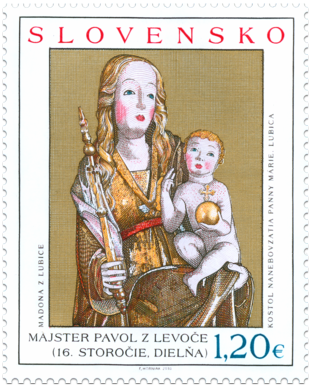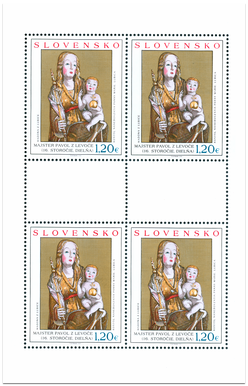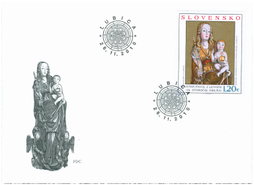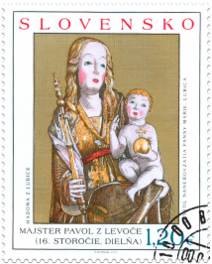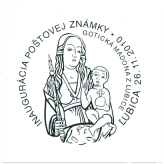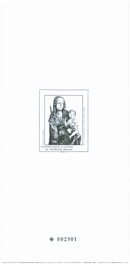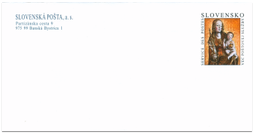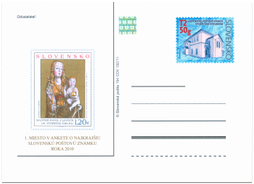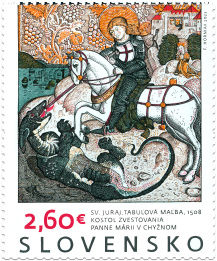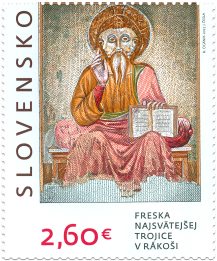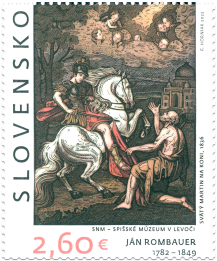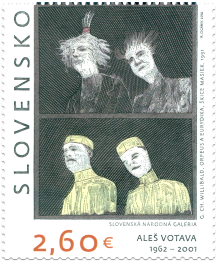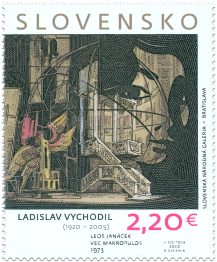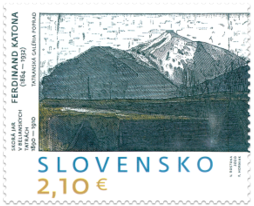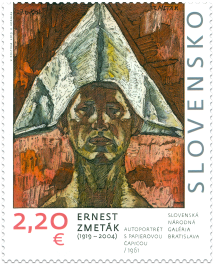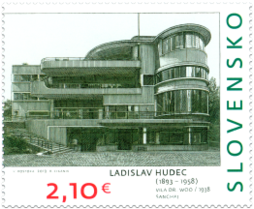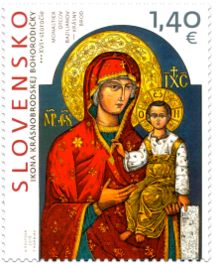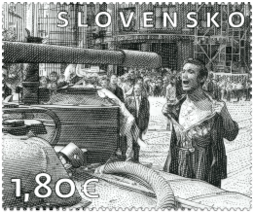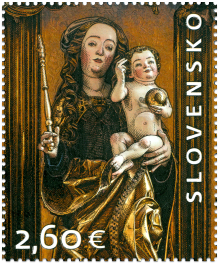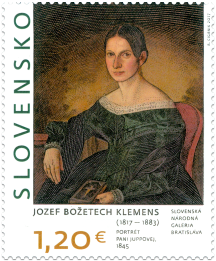486 Date of issue
26.11.2010 Face value
1.20 € Sell price
1.20 €
The Parish church of Assumption of Virgin Mary in Ľubica is the largest church from the group of so-called double-nave Spiš churches and its architecture integrates several reconstructions. After the second half of the 14th century the nave of the older church was vaulted with a cross vault on three slender columns. From the era of the older, still gothic period, two portals but especially one of few preserved round windows of Slovak Gothic – rosette are worth mentioning. The church interior underwent fundamental alterations in the 17th and 18th century. After 1764, the walls and the vault were decorated with rococo ornaments. Baldachin altar in sanctuary (1680) is older and was created by baroque sculptor Olaf Engelholm from Levoča. A niche of the older still gothic altar with the statue of the Virgin Mary from the beginning of the 16th century is also integrated in this monumental work.
Madonna, wearing bright gold cloak, accompanied with little statues of four saints on the sides represents the type of so-called Apocalyptic Mary standing on the half moon with two angels by her feet. The moon represents the devil that was humiliated by the Mother God. Both angels raising her cloak serve the purpose of sending the message face to face to the spectators. The method of the coat shaping but mainly the facial features of the Virgin Mary and the angels reveal the origin of the statue as well as the whole original gothic altar in the workshop of Master Paul of Levoča.
The preservation of the older statue, even the whole cabinet of the gothic retable in the new baroque altar in Ľubica is not such a big exception. In the 17th century similar phenomenon is observed in the baroque altar of the Minorities church in Levoča that is also the work of Olaf Engelholm. Gothic Madonna could be found in the baroque altar of the Parish church in Podolínec. In 1696, the whole gothic cabinet with eight original statues was integrated into the altar in the Parish church in Prešov. Such a historicism surely relates to the former recatholization atmosphere and its effort to emphasize religious and cultural tradition continuity of the period before the reformation. Artistic monuments became significant argumentative means in religion disputes in the 17th century.
Dušan Buran
© 2024 POFIS - Postal philatelic service. All rights reserved

